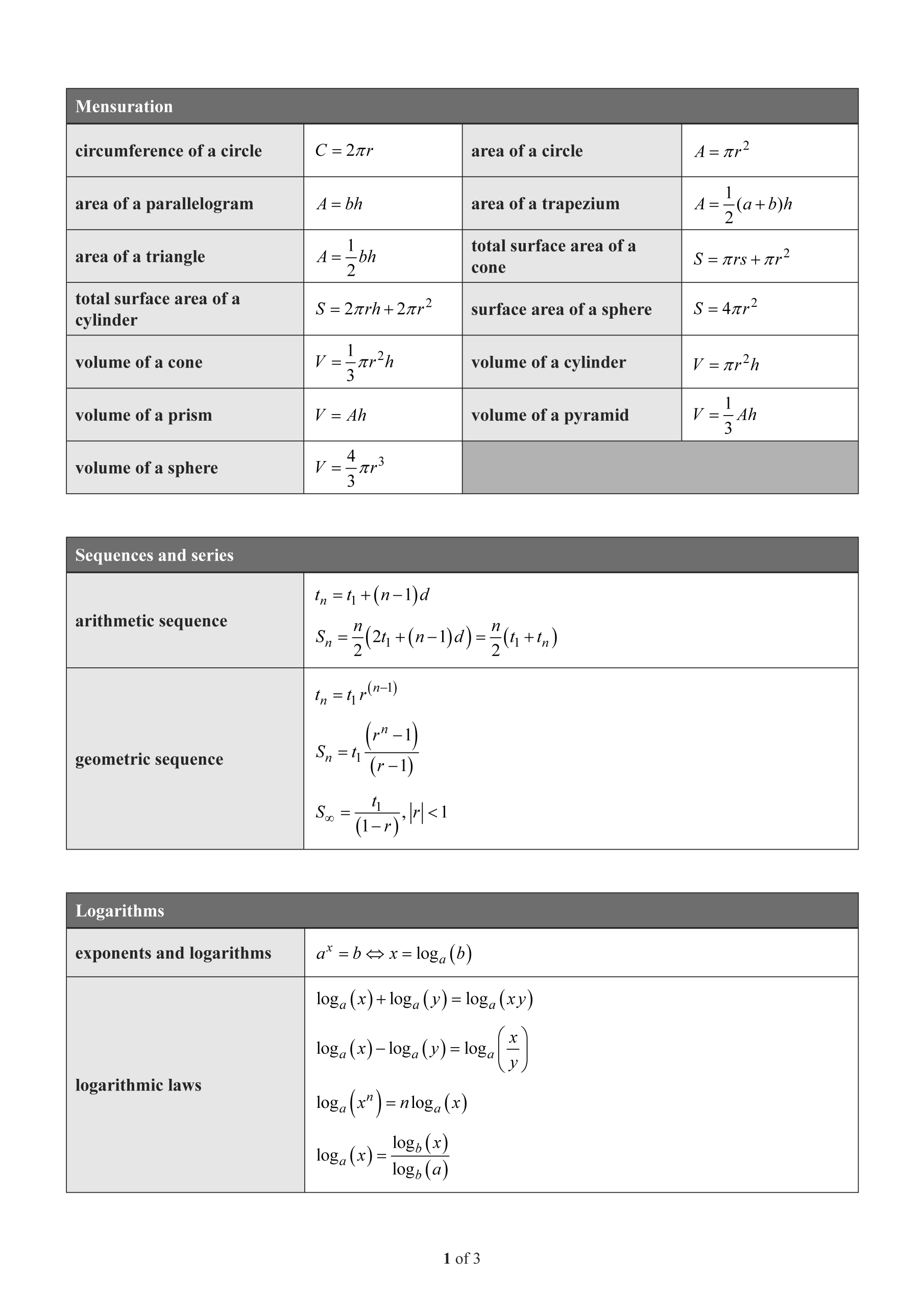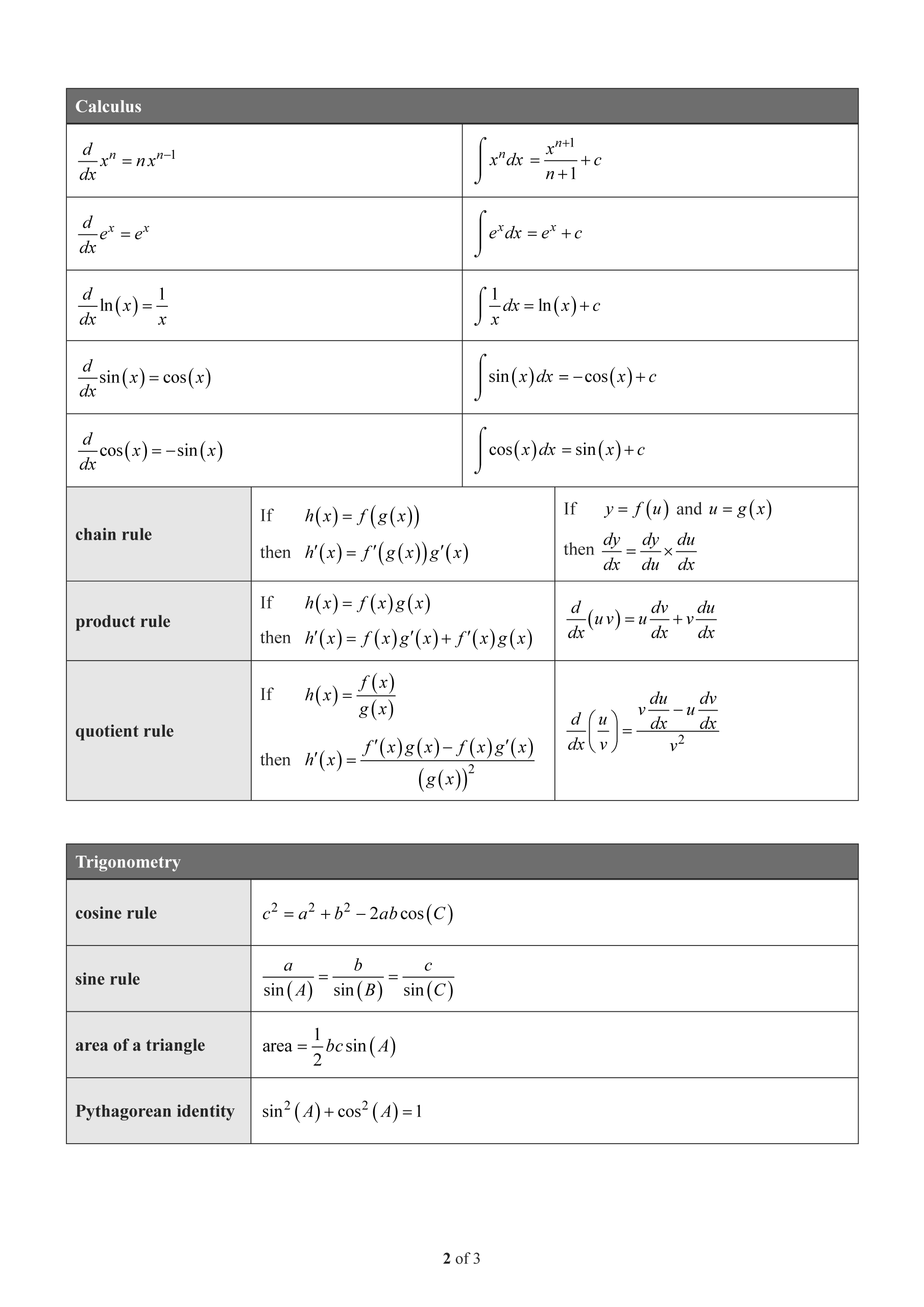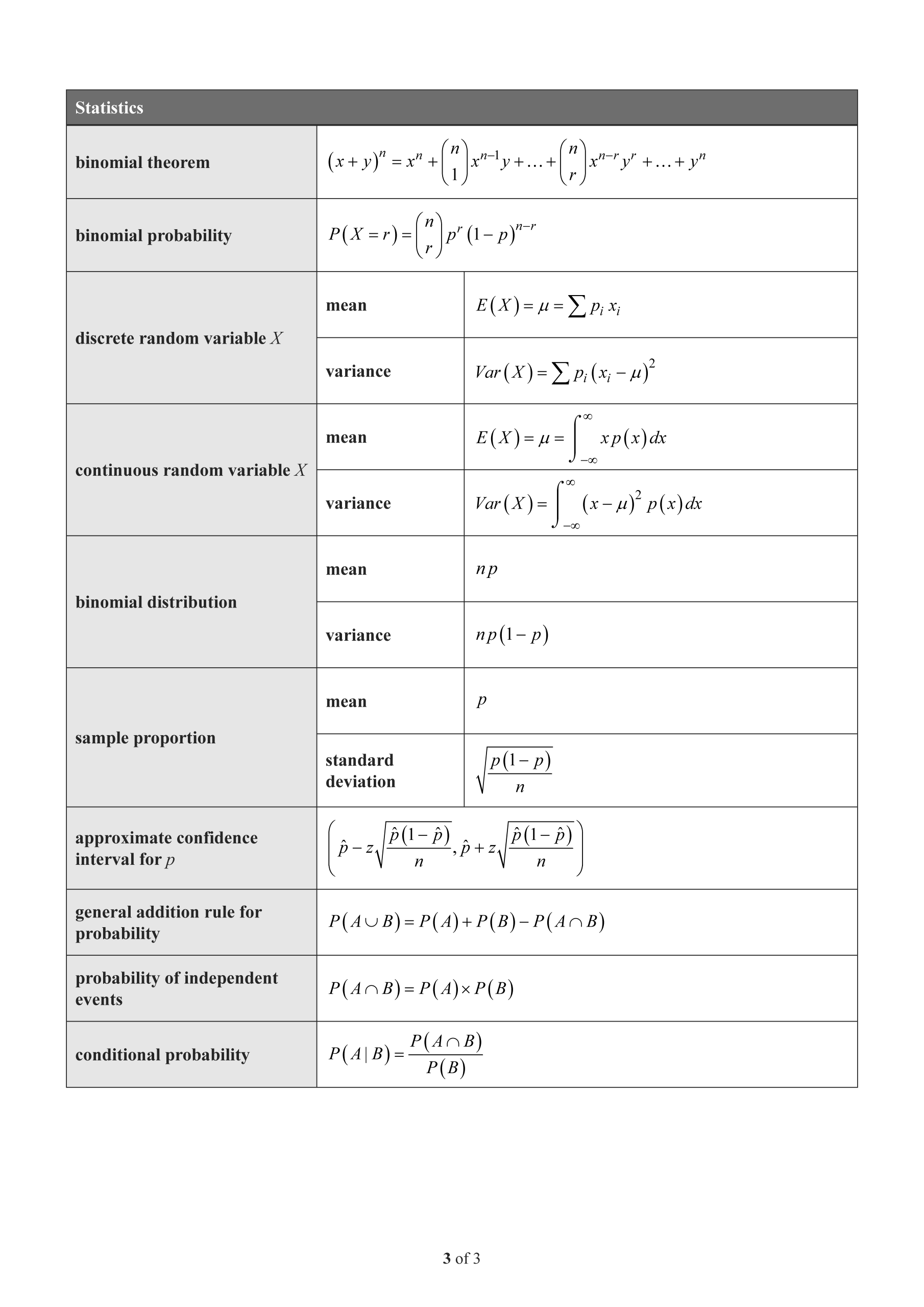QCAA Maths Methods Differential Calculus Mini Test 4
External Assessment Paper 2 — Technology-active
Number of marks: 8
Perusal time: 1 minute
Writing time: 12 minutes
Section 1
Instructions
• This section has 10 questions and is worth 10 marks.
• Use a 2B pencil to fill in the A, B, C or D answer bubble completely.
• Choose the best answer for Questions 1 10.
• If you change your mind or make a mistake, use an eraser to remove your response and fill in the new answer bubble completely.
The displacement (m) of a moving particle is given by \(d = e^{0.5t} - 1\), where \(t\) is time (s). The acceleration (m s\(^{-2}\)) of the particle when \(t = 4\) is
- (A) 7.3891
- (B) 6.3891
- (C) 3.6945
- (D) 1.8473
If \(f(x) = \sin(3x)\), determine the value of \(f'(\frac{\pi}{8})\).
- (A) 2.772
- (B) 1.148
- (C) 0.929
- (D) 0.383
The derivative of the function \(f(x)\) is given by \(f'(x) = \sin(x^3)\) for the domain \(-1.8 < x < 1.8\). The number of points of inflection that the graph of \(f(x)\) has on this interval is
- (A) 1
- (B) 3
- (C) 4
- (D) 5
Identify the correct features of the function \(f(x) = xe^x\)
- (A) \(f'(-1) = 0, f''(-1) < 0\)
- (B) \(f'(-1) = 0, f''(-1) > 0\)
- (C) \(f'(-1) < 0, f''(-1) < 0\)
- (D) \(f'(-1) < 0, f''(-1) > 0\)
The position (in cm) of a particle is given by \(x = \cos(4t)\), where \(t\) is time (in seconds). The velocity of the particle when \(t = 5\) is
- (A) 1.6323 cm s\(^{-1}\)
- (B) 0.4081 cm s\(^{-1}\)
- (C) –0.9129 cm s\(^{-1}\)
- (D) –3.6518 cm s\(^{-1}\)
Section 2
Instructions
• Write using black or blue pen.
• Questions worth more than one mark require mathematical reasoning and/or working to be shown to support answers.
• If you need more space for a response, use the additional pages at the back of this book.
– On the additional pages, write the question number you are responding to.
– Cancel any incorrect response by ruling a single diagonal line through your work.
– Write the page number of your alternative/additional response, i.e. See page …
– If you do not do this, your original response will be marked.
• This section has nine questions and is worth 45 marks.
The number of animals in a population (in thousands) is modelled by the function \(P\) such that \[ P(t) = \frac{100}{1+4e^{-t}} \] where \(t\) is in years.
Determine the number of animals in the population when the population is growing the fastest.
END OF PAPER


